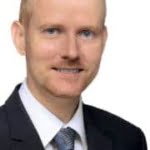2018 - the year of changes


Digital Access (Indirect Use): Is SAP's newly introduced licensing model to cover indirect use, as most fear, a money machine? Or is it the logical consequence of changing requirements for technological support of business processes?
Comparison with other manufacturers and analysis of the company's own business model show that planning in times of IoT and Industrie 4.0 is designed for growth. Organizations pursue the goal of becoming more efficient, more profitable and qualitatively better.
Is it not therefore legitimate that a software manufacturer who contributes to increasing efficiency should want to share in the success of its customers? What else should strengthen its intrinsic motivation to create conditions that enable companies to work with fewer and fewer users and become more efficient through the use of technical interfaces, bots, etc.?
User-based licensing models are no longer in keeping with the times in terms of a win-win situation. Consequently, regardless of the current status of possible measurement and planability, this model can be seen as a logical evolutionary step that takes into account today's requirements for SAP as well as the technical solution options.
Exchange Infrastructure (XI): Since the Diageo case in the UK became known, an army of SAP licensing experts has formed. Everyone knows the case down to the last detail, and recently there have been frequent attempts to hypothetically transfer it to Germany and technically circumvent licensing obligations.
In most cases, the conclusion is drawn that for customers who purchased corresponding NetWeaver (NW) full-use licenses (CPU-based) around 2005, the use by users of in-house developments and third-party applications integrated via this is compensated.
For the sake of clarification, the following section uses the 2005 list of prices and conditions (PKL) to illustrate which options are actually available and whether this widespread opinion does justice to the contents of the PKL, especially since very few customers are likely to be affected by new purchases or acceptance of new license terms and conditions in the meantime.
NetWeaver full-use scenarios - firstly XI between SAP and SAP: XI no longer subject to licensing. Affected applications are subject to licensing according to SAP terms and conditions (Defined Users and Package License).
Secondly: XI between SAP and own developments/third party applications in own namespace, without using SAP application, solution or DB functionalities. No licenses for XI or additional users are required.
Third: XI between SAP and in-house developments/third-party applications using SAP application, solution or DB functionalities. XI does not require any further licenses.
Affected applications subject to licensing in accordance with SAP terms and conditions (defined users and package license); in this context, the users of the in-house development/third-party application must also be licensed as defined users.
The Diageo Salesforce scenario published as a free ride would fall under scenario 3 here, as it can be assumed that master data is created, adjusted or deleted in the connected SAP application component.
A case fitting scenario 2 is more likely to be due to SAP's goodwill than to the fact that no relevant functionalities are actually used. It is important to look at the relevant PKL, where there is a difference between the license freedom of the users of the applications with regard to NW technology and the license obligation for the depicted use.
Path of Appeal: Experts complain about SAP's lack of openness and narrow-mindedness, but SAP itself proves with the new changes, such as the introduction of the so-called Path of Appeal, that it is open to independent assessments in cases of dispute and trusts the opinion of corresponding experts in order to resolve disputes amicably, to make license terms sustainably transparent, and to maintain sustainable customer relationships.






